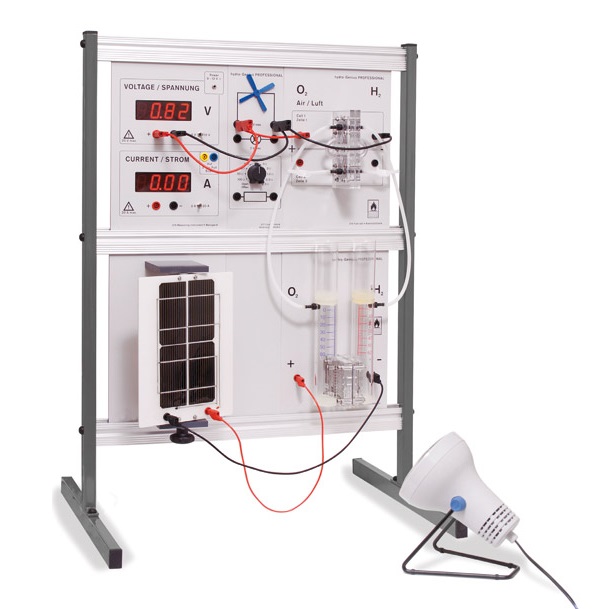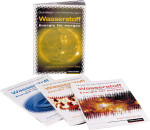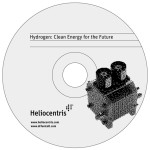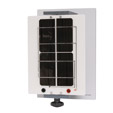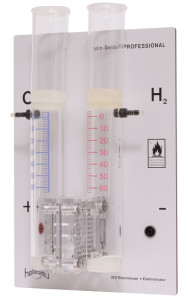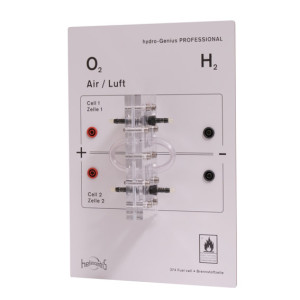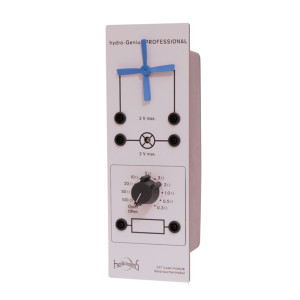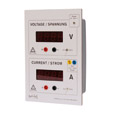Designed for class demonstrations and hands-on use by students; solar and fuel cell technology can be examined in detail. Large components and easy-to-read displays are ideal for group presentations.
Preconfigured experiments and comprehensive documentation facilitate the preparation of classes.
Suitable for introductory lectures covering physics, chemistry and technology topics:
- Molecules and chemical reactions
- Reaction Speeds
- Thermodynamics
- Electrochemistry
- Energy conversion and efficiency
- Measuring and interpreting characteristic curves
Sample Experiments:
- Current and voltage characteristic curves
- Faraday’s first law
- Electrolysis: H²0 = 0 + 2H
- Energy efficiency of an electrolyzer and a fuel cell
- Thermodynamics: electrochemical processes
- Series and parallel connection


